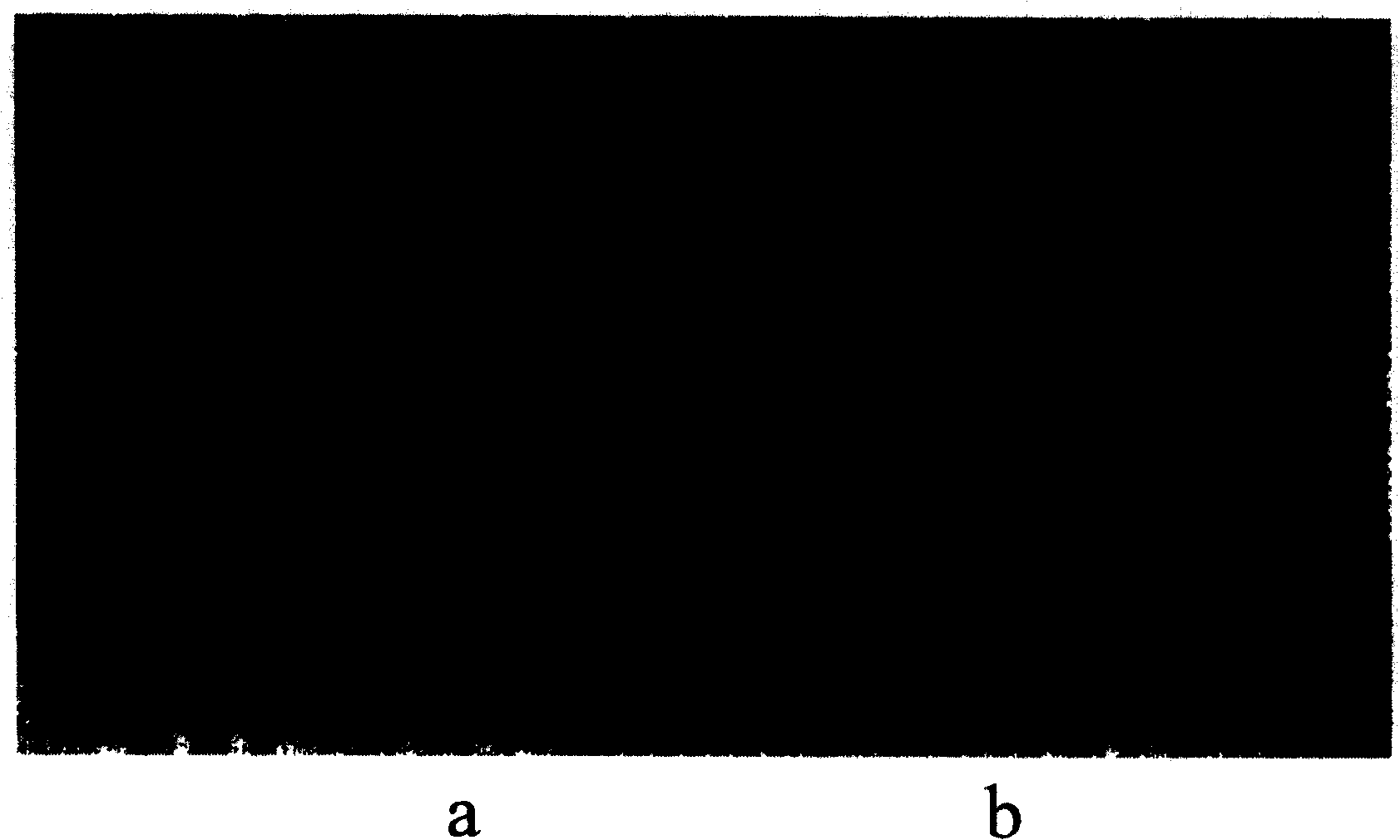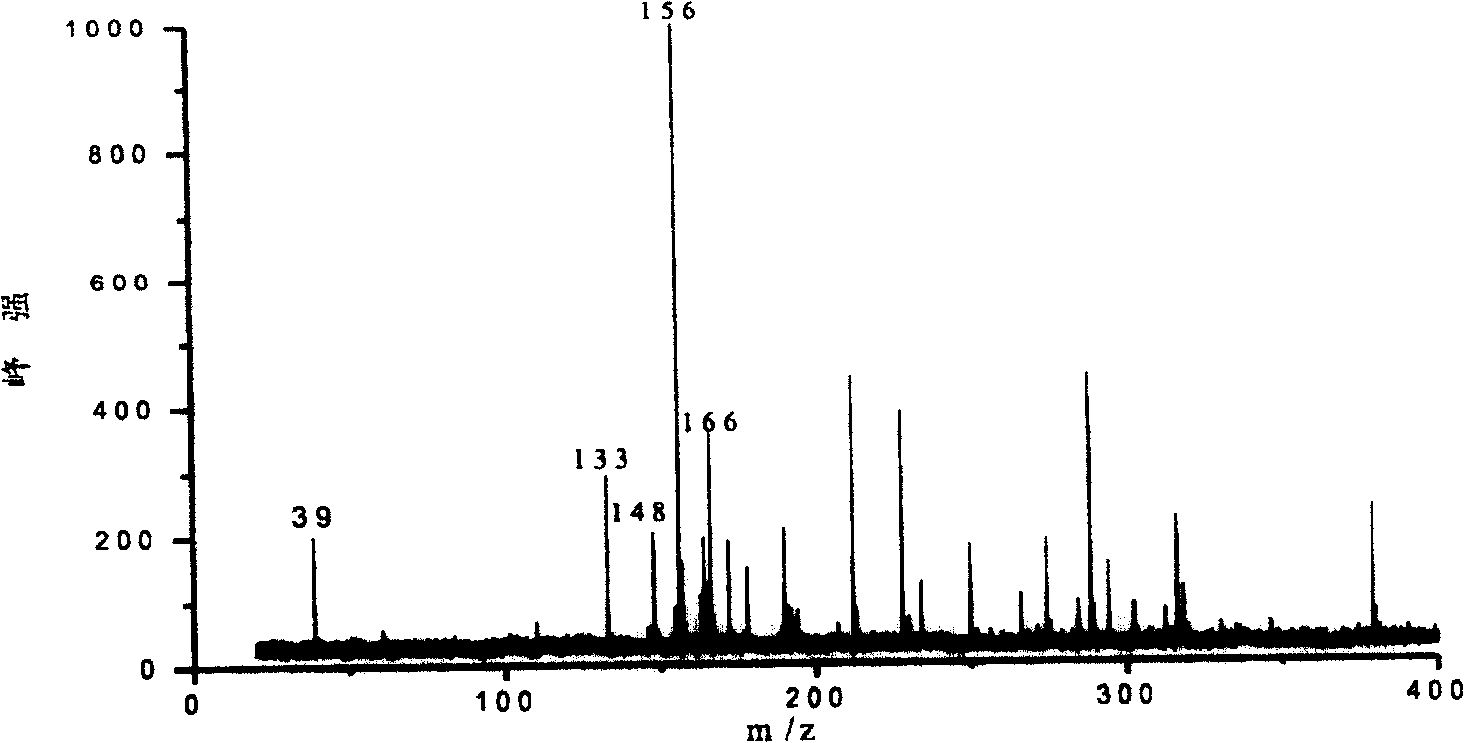Application of water-soluble multi-wall carbon nanotube as substrate in MALDI-MS
A multi-walled carbon nanotube, water-soluble technology, applied in the direction of nanotechnology, nanotechnology, nanostructure manufacturing, etc., can solve problems such as difficult to accurately control the amount of matrix added, low desorption ionization efficiency, and weak surface interaction of metal targets , to achieve the effects of convenient quantitative analysis, improved desorption ionization efficiency, and convenient sample pointing operation
- Summary
- Abstract
- Description
- Claims
- Application Information
AI Technical Summary
Problems solved by technology
Method used
Image
Examples
Embodiment 1
[0030] Example 1 Water-soluble multi-walled carbon nanotubes used as MALDI-MS matrix for mass spectrometric analysis of Chinese medicine Coptidis Rhizoma extract
[0031] Preparation of water-soluble multi-walled carbon nanotubes:
[0032] (1) Weigh 200 mg of multi-walled carbon nanotubes and place them in a 100 mL flask, and slowly add 10 mL of concentrated nitric acid and 30 mL of concentrated sulfuric acid successively;
[0033] (2) Electromagnetic stirring, heated to 120°C and refluxed for 30min;
[0034] (3) remove heating, stir and cool to room temperature;
[0035] (4) Transfer the solution in the flask to a beaker filled with 300mL of cold water, stir and cool to room temperature;
[0036] (5) Suction filter the diluted solution with a 0.45 μm organic membrane, and rinse with secondary water until the pH is close to neutral;
[0037] (6) Transfer the filter membrane and the filter cake on the membrane to a beaker filled with 50 mL of absolute ethanol, and take out t...
Embodiment 2
[0045] Example 2 Quantitative analysis of water-soluble multi-walled carbon nanotubes as a MALDI-MS matrix for the components palmatine and jatrorrhizine in the Chinese medicine Coptidis Rhizoma extract
[0046] The specific process is as follows:
[0047] 1) The preparation of the multi-walled carbon nanotube matrix solution is the same as in Example 1;
[0048] 2) The preparation of Coptidis Rhizoma extract is the same as in Example 1;
[0049] 3) Dilute the extract of Coptidis rhizome 1,000,000 times with water, and add 0ng, 5ng, 10ng, 15ng and 20ng of palmatine and jatrorrhizine to 1mL solution respectively;
[0050] 4) Take 1 μL of sample solutions of various concentrations and spot them on the substrate layer, and after natural drying, send them to MALDI-MS instrument for mass spectrometry analysis;
[0051] 5) With berberine as the internal standard, calculate the relative peak areas of palmatine and jatrorrhizine to the internal standard respectively, and calculate t...
Embodiment 3
[0054] Embodiment 3 Water-soluble multi-walled carbon nanotubes and general multi-walled carbon nanotubes water-soluble comparison
[0055] Such as figure 1 As shown, the specific process is as follows:
[0056] (1) Weigh 10 mg of water-soluble multi-walled carbon nanotubes and common multi-walled carbon nanotubes respectively, add 5 mL of water respectively, and let stand for 48 hours after ultrasonication for 3 minutes;
[0057] (2) The water solubility of general multi-walled carbon nanotubes is as follows: figure 1 As shown in figure a on the left in the middle;
[0058] (3) Get the water-soluble multi-walled carbon nanotube solution, and centrifuge (5000rpm, 10min) to remove the undissolved part;
[0059] (4) The water solubility of water-soluble multi-walled carbon nanotubes is as follows: figure 1 As shown in Figure b on the right, the measured solubility is about 1.0 mg / mL.
[0060] The preparation of water-soluble multi-walled carbon nanotubes described in this e...
PUM
| Property | Measurement | Unit |
|---|---|---|
| solubility (mass) | aaaaa | aaaaa |
Abstract
Description
Claims
Application Information
 Login to View More
Login to View More - R&D
- Intellectual Property
- Life Sciences
- Materials
- Tech Scout
- Unparalleled Data Quality
- Higher Quality Content
- 60% Fewer Hallucinations
Browse by: Latest US Patents, China's latest patents, Technical Efficacy Thesaurus, Application Domain, Technology Topic, Popular Technical Reports.
© 2025 PatSnap. All rights reserved.Legal|Privacy policy|Modern Slavery Act Transparency Statement|Sitemap|About US| Contact US: help@patsnap.com



